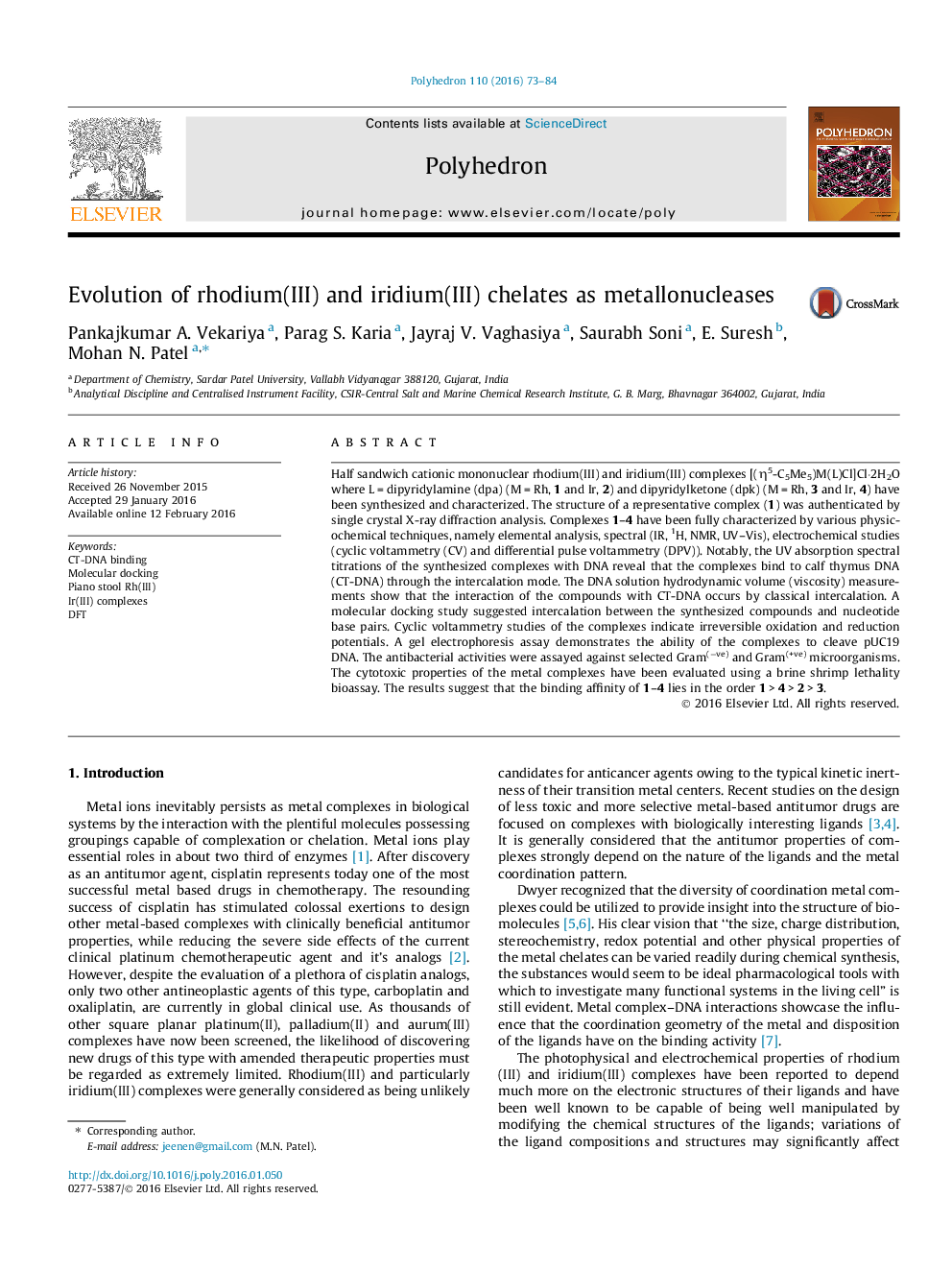| کد مقاله | کد نشریه | سال انتشار | مقاله انگلیسی | نسخه تمام متن |
|---|---|---|---|---|
| 1335592 | 1500230 | 2016 | 12 صفحه PDF | دانلود رایگان |

Half sandwich cationic mononuclear rhodium(III) and iridium(III) complexes [(η5-C5Me5)M(L)Cl]Cl·2H2O where L = dipyridylamine (dpa) (M = Rh, 1 and Ir, 2) and dipyridylketone (dpk) (M = Rh, 3 and Ir, 4) have been synthesized and characterized. The structure of a representative complex (1) was authenticated by single crystal X-ray diffraction analysis. Complexes 1–4 have been fully characterized by various physicochemical techniques, namely elemental analysis, spectral (IR, 1H, NMR, UV–Vis), electrochemical studies (cyclic voltammetry (CV) and differential pulse voltammetry (DPV)). Notably, the UV absorption spectral titrations of the synthesized complexes with DNA reveal that the complexes bind to calf thymus DNA (CT-DNA) through the intercalation mode. The DNA solution hydrodynamic volume (viscosity) measurements show that the interaction of the compounds with CT-DNA occurs by classical intercalation. A molecular docking study suggested intercalation between the synthesized compounds and nucleotide base pairs. Cyclic voltammetry studies of the complexes indicate irreversible oxidation and reduction potentials. A gel electrophoresis assay demonstrates the ability of the complexes to cleave pUC19 DNA. The antibacterial activities were assayed against selected Gram(−ve) and Gram(+ve) microorganisms. The cytotoxic properties of the metal complexes have been evaluated using a brine shrimp lethality bioassay. The results suggest that the binding affinity of 1–4 lies in the order 1 > 4 > 2 > 3.
A decrease in absorbance is due to accommodation of the aromatic chromophore of the piano stool Rh(III) and Ir(III) complexes in the DNA base pairs via an intercalative mode of binding. Due to intercalation of the complexes, lengthening of the DNA strand occurs, which increases its viscosity. The complexes also show cytotoxicity activity.Figure optionsDownload as PowerPoint slide
Journal: Polyhedron - Volume 110, 28 May 2016, Pages 73–84